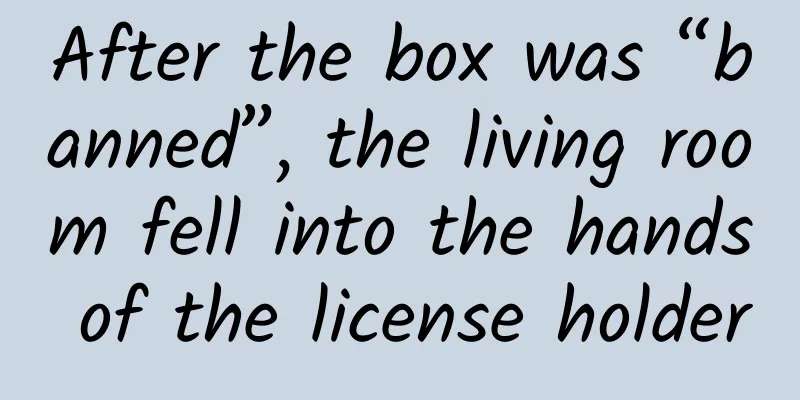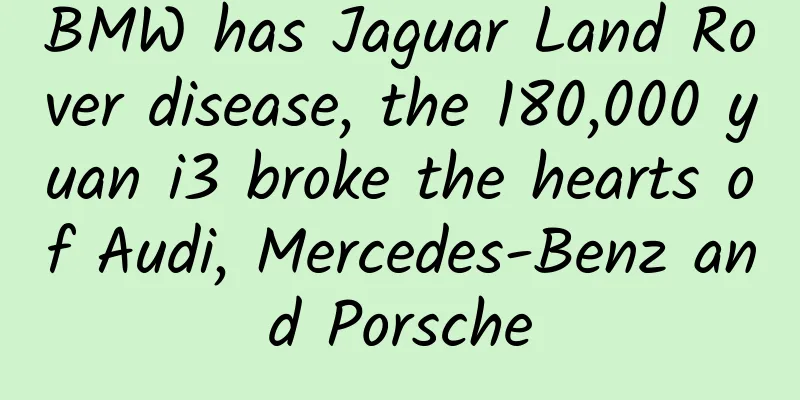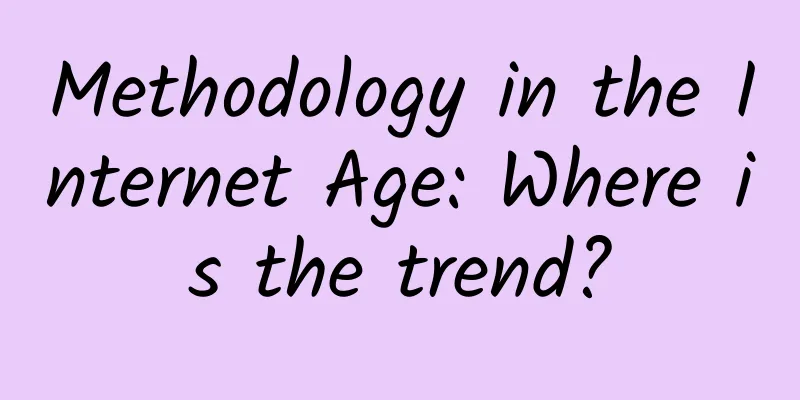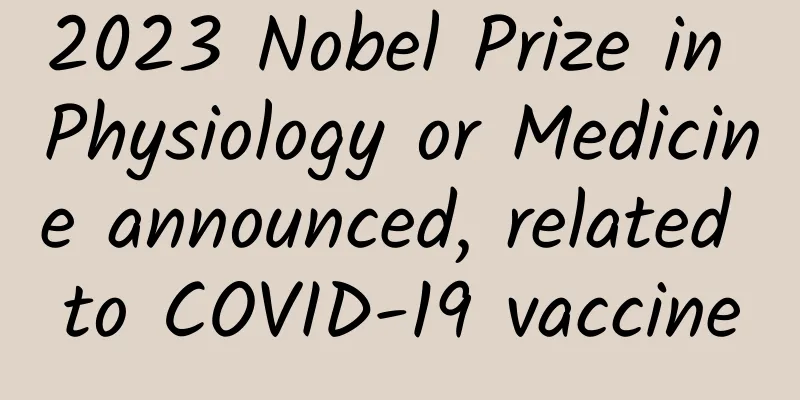Before drawing a book worth 76.23 million, he... went bankrupt first?

|
In the autumn of 1813, a young man named John James Audubon was passing through a vast wilderness when he was struck by the flocks of migrating passenger pigeons he saw. He excitedly recorded the grand spectacle of their passage: hundreds of millions of passenger pigeons filled the sky, densely gathered into a group of azure blue, blocking the midday sun, and even "the pigeon droppings fell to the ground like melted snowflakes, and the humming of wings continued, capturing all my senses." The torrent of birds flew over for three consecutive days. Shocked, Audubon predicted that passenger pigeons would never be eliminated by humans. Audubon was moved by the tenderness and affection of the passenger pigeon (Ectopistes migratorius) towards its partner, and painted the pair in a delicate manner, caressing each other's beaks|Museum of Fine Arts, Boston But in reality, countless passenger pigeons lost their wives and children. The almost carnival-like slaughter of them by bird hunters lasted for more than a century, and this huge number of creatures was unfortunately extinct in 1914. Audubon’s paintings thus became precious and mournful, lost records of the past. He also depicted birds that have since become extinct, such as the great auk, the Carolina parakeet, and the Labrador duck, in their once-vivid poses. The Great Auk (Pinguinus impennis) was once called the "Giant Penguin of the Arctic"; in 1844, the last pair of Great Auks with reliable records were strangled to death by two fishermen, and another crushed their incubating eggs|Museum of Fine Arts, Boston Decades later, Audubon had become a world-renowned ornithologist, naturalist, and painter, but he could never stop rushing to the jungle, and still indomitable in his exploration of the beauty of birds and nature. Throughout his life, Audubon identified, observed, and studied nearly 500 species of birds, discovered 25 new species and 12 new subspecies, and created "Birds of America", a national treasure-level atlas with both artistic and scientific value. In 2010, at the Sotheby's auction in the UK, the book was sold for 7.3 million pounds (about 76.23 million yuan), making it the second most expensive printed book in history. Birds of America print edition consists of 435 hand-painted watercolors, measuring 90cm x 60cm | Suzanne Plunkett The turning point for Audubon's successful career was the bankruptcy that almost ruined him. Audubon's Youth Audubon was born in 1785 on the French island of Saint-Domingue (now Haiti), where his father served in the French Navy. Audubon was attracted to the freedom of flying birds since he was a child, and secretly had the desire to make a splash: "To explore the natural world of the New World, especially to gain true knowledge about birds, and to try to draw every new species." John James Audubon (1785-1851)|John Syme / The White House Historical Association In 1803, young Audubon arrived in the United States and lived in the estate purchased by his father. He spent a long period of carefree days and met his wife, Lucy Bakewell, who would accompany him for the rest of his life. In a cave near the estate, Audubon became familiar with a family of Tyrannical Flycatchers and witnessed the warm process of the chicks from birth to hatching. This was the first object of observation that he particularly cherished, and from then on, he devoted all his leisure time to flying birds. Eastern Phoebe Flycatcher (Sayornis phoebe)|audubon.org However, the first major economic crisis in the United States in 1819 disrupted Audubon's stable life. The retail industry collapsed at the time, and Audubon's grocery store could not continue to operate; he was bankrupt and briefly imprisoned for debt disputes, falling into the darkest situation of his life. But his wife's consistent tenacity, courage and optimism inspired him. Audubon tried sawmilling, real estate, fencing coaching, specimen making and other jobs, and finally decided to officially start his career as a professional artist - while selling portraits, he insisted on his ambition to observe jungles and birds. At 4 p.m. on October 12, 1820, Audubon boarded a steamer bound for the jungles of New Orleans, beginning a multi-year expedition. He had traveled along the Mississippi River when he was 24 years old, but when he returned this time, he was no longer young. The waves quietly saw him off, and Audubon's mind was swaying as the boat swayed. He later wrote: The confluence of the two streams in front of me reminds me of my former self: a young man who had just entered the world, with a gentle and refreshing gentlemanly demeanor, who hoped to behave himself in the face of numerous difficulties and dangers, but was eventually lost in the whirlpool. But in his diary on the day of his departure, he still wrote to himself with great ambition: "At this time when I am short of money, my talent is my greatest support, and my ideals and enthusiasm will surely guide me out of the predicament... I am willing to do my best." The sound of the river is mighty, and he rises up behind him. His artistic rebirth and romantic adventure began in the jungle. Sending love to the birds, heading to the deepest part of the jungle On New Year's Day in 1821, as the morning light had just broken through the clouds, Audubon was pleasantly surprised to find himself in a jungle kingdom where birds were singing and thrushes were flying around. The tulip trees were tall and majestic, covered with emerald green moss, the streams were full of waterfowl, the air was full of songs, the singing of mockingbirds rose and fell, and the cardinals chirped all day long. The bright red Cardinal (Cardinalis cardinalis) is sometimes called the Cardinal or Cardinal Bird|Museum of Fine Arts, Boston It may be difficult for us to imagine the inspirational significance of jungle exploration to Audubon, but from the diaries and paintings he left behind, we can indeed feel his joy in discovering new birds, the excitement of experiencing adventures, and the happiness of his dreams gradually coming true. It seems that his melancholy soul has found a resting place in nature. Audubon called himself a "resident of the jungle kingdom" and explored for decades, traveling to Florida, Texas, Labrador Peninsula, Missouri, etc. The picture of the New World spread out before his eyes in a colorful way. Audubon also visited an island that was not even on the map. There were brilliant trees, brilliant oranges, intoxicating flowers, and hummingbirds flying here. He confidently "claimed sovereignty" and named it "Audubon Island." Gray Mockingbird (Dumetella carolinensis) | audubon.org What made him even happier was the company of birds. The clever barred owl once accompanied him on lonely nights: "This little robber of the night stopped a few yards away from me, exposed his whole body to the firelight, and stared at me strangely." Audubon once saw four crows teasing and chasing a barred owl - this may be because the barred owl's eyesight is poor during the day, and anything that suddenly approaches can scare them. Audubon highlighted this feature in his illustrations: a "highly myopic" barred owl stared at a little squirrel in surprise, almost sticking to its face. Barred Owl (Strix varia) | Brooklyn Museum Audubon's observations of birds were always detailed and vivid. When he later observed the American pelican, he wrote: "If one pelicans yawned, all the other pelicans would open their long and wide jaws and yawn lazily one after another, as if they had been resonated. The scene was very funny." American Pelican (Pelecanus erythrorhynchos) | audubon.org While observing the willow ptarmigan, he discovered the seashore vetchlings blooming nearby and drew them in the illustration. Willow Ptarmigan (Lagopus lagopus) and Lathyrus japonicus in bloom at lower right|audubon.org However, the jungle is not just about pastoral myths or idyllic poetry, it also has countless dangers. According to Audubon's records, he struggled every day amidst the entanglement of horizontal wood, vines, thorns, and bushes; after barely filling his stomach, he could only "sleep on buffalo skin wrapped in wet clothes and mud." Just after avoiding the crocodiles in the lake, dark clouds came again, lightning suddenly streaked across the sky, strong winds blew, heavy rain came, and the pine trees caught fire due to lightning, surrounded by a circle of strange halos. While chasing an eagle owl, Audubon accidentally fell into quicksand and most of his body could not move. Fortunately, the boatman arrived and rescued him. Audubon, who survived the disaster, breathed a sigh of relief and continued to move towards the deepest part of the jungle. The cranes cry in the sky, their voices heard in the sky Audubon's passion and perseverance did not disappoint him, and his investigation in New Orleans yielded fruitful results. In 1826, he took a merchant ship loaded with cotton and a box full of paintings to Liverpool, England, to discuss the publication of Birds of America. Just 10 days after arriving in Liverpool, he held his first solo exhibition. The 1.0×0.7 meter-sized, 1:1 hand-drawn illustrations of birds in real size amazed everyone. For the British, the bird life scenes of hunting, courtship, fighting, and the magnificent and strange scenery of the New World are simply romantic mysteries. Bald eagles, turkeys, and American eagle owls are all considered to symbolize the "vision of the new world" - perhaps also symbolizing Audubon's vision of a new peak in his career. Audubon is said to have imitated the call of the American Eagle Owl (Bubo virginianus) in his paintings. The success of the exhibition won Audubon the favor and admiration of a large number of aristocrats, who subscribed to the illustrated book to be serialized, including the then British King George IV. However, in the hustle and bustle of the city and the world of fame and fortune, Audubon gradually became bored with the activities of the upper class and became mentally depressed. He wrote: "It is painful to leave the jungle, where I always enjoy the most peaceful and sweetest pleasures." He even preferred to "walk without shirt and trousers through the mosquito-filled Florida swamps" to leave Britain. Bald Eagle (Haliaeetus leucocephalus) | audubon.org During his time in the UK, correspondence with his wife Lucy gave him the greatest comfort. The paper is short but the feelings are deep Since Audubon's expedition to the jungle in 1820, the couple had often been separated by mountains and seas and had spent little time together. In his letters home, although Audubon often mentioned that he had drawn a few more birds and was rambling, he also did not forget to plead with his wife: "My Lucy, please do not be troubled by some strange idea, such as I like birds more than you." Lucy Buckwell Audubon (1787-1874), this is her later years|Wikimedia Commons In fact, Lucy was very supportive of his career and loved birds, but she had to stay at home to improve the tight financial situation and provide the best life for her children. She became a respected piano teacher and founded a music school in an era when women were not highly respected. Audubon, who had been stranded in England for many years, wrote down his thoughts in a letter. He imagined the beautiful image of Lucy strolling in front of the magnolia tree, and looked forward to meeting her again at the edge of the jungle: "If I could hear the mellow song of the mockingbird, how wonderful it would be! If I could give you another affectionate kiss, oh, my wife, how happy I would be!" Mockingbird (Mimus polyglottos) | Museum of Fine Arts, Boston The mockingbird's repeated appearance in the letter seems to have a special meaning, and Audubon also devotes extra tenderness to the description of the mockingbird's courtship: See how he flies around his mate, light as a butterfly! With his tail spread wide, he glides in a circle, drops to the ground again, draws closer to his mate, eyes full of joy - because she has promised to be his lover, his only lover - he gently lifts his beautiful wings, bows to her, then leaps up again, singing, his happiness is beyond words. This bird lives in large numbers in Louisiana, where the magnolias grow luxuriantly—the homeland that Audubon and his wife cherished so much. Lucy also took good care of many mockingbirds, which became the unique love image and romantic code for Audubon and his wife. Finally, in the winter of 1829, they were reunited and took a walk in the woods as they had wished, letting the sunlight filtering through the swaying branches shine in front of them. The dance of the light spots was in tune with the love song of the mockingbirds - it was a warm winter day unique to Louisiana. Love is in our generation Audubon was lucky enough to catch up with the golden age of natural history and natural history, and felt firsthand that "all of Europe was crazy about natural history." Of course, it was he and a group of naturalists who worked hard to open up the mountains and forests, making that originally dull era become brilliant. Blue Jay (Cyanocitta cristata) | Museum of Fine Arts, Boston Audubon had many like-minded friends. As a young man in France, he befriended Charles-Marie D'Orbigny, a passionate naturalist who first inspired Audubon to practice drawing birds in pastels and pencils, as they searched for birds along the Loire River. Another example is the ornithologist Charles Lucien Bonaparte, Napoleon's nephew, who was also keen on searching for birds in America. Audubon often delightedly told him about the bird ecology he had seen. John Bachman, a mutual friend of the Audubons, traveled with Audubon and collaborated on their study of viviparous quadrupeds. They also became in-laws. Audubon sometimes complained about the lack of letters from Bachman: "If I don't get any more letters from him, I shall knock on the door of my friend's house like a woodpecker on a hard tree, just to see what's going on inside." Ivory-billed Woodpecker (Campephilus principalis) Audubon marveled at their feathers as noble and elegant as Van Dyck's paintings|Boston Museum of Fine Arts The hardships of exploring the jungle and the hard work of drawing and writing books caused Audubon to suffer from minor illnesses frequently, and he even suffered from dementia in his later years. In 1848, Bachmann went to visit him. The two old friends, now gray-haired, met again, but Audubon could not recognize him. But his family recalled that Audubon, who was alone, "was obviously very comfortable and enjoyed his little thoughts one after another." He seemed to have returned to his own innocent world - in that world, he was accompanied by birds and soared side by side. It is undeniable that Audubon and his time had their limitations. Due to the lack of photography technology, naturalists of that era had to kill birds before drawing bird illustrations. Audubon recorded that he had to endure the smell of corpses while painting, so he wrote solemnly. Fortunately, his drawings of these flying feathers were deeply rooted in people's hearts and became the best declaration and the most beautiful poster for protecting birds and nature. The name "Audubon" has also been passed down to this day, and the Audubon Society, founded in his memory, has always been committed to bird watching and nature conservation, with far-reaching influence. Audubon urged his readers to be kind to birds such as the Carolina parakeet (Conuropsis carolinensis), which was now extinct after being shot by farmers as a pest for eating grains and fruits. | Brooklyn Museum Audubon died peacefully at home in 1851. Rabindranath Tagore’s poem beautifully summarizes his life: “There are no traces of wings in the sky, but I have flown over.” All the golden days, come on! On December 21, 1826, Audubon wrote to his wife that he would give a series of lectures at the Werner Natural History Society. Darwin, who was studying medicine at the University of Edinburgh at the time, attended the lectures as an audience member and later recalled these "interesting lectures on the habits of North American birds" in his autobiography. The professor of botany who hosted Audubon at Cambridge University the following year was Darwin's later mentor. In his most important works, such as The Origin of Species, Darwin repeatedly mentioned and quoted Audubon, praising his meticulous observations and unique insights. The Labrador duck (Camptorhynchus labradorius) is an extinct duck species that was last seen in 1878. It is likely the first animal to become extinct in North America since 1500. | audubon.org Perhaps in a lecture, Audubon finished vividly telling the story of observing the white buzzard, and looked at the students in the audience with deep affection: Go on a long journey, young people! That year, Darwin was 17 years old. Five years later, he embarked on a round-the-world expedition on the Beagle with great enthusiasm; in the same year, Audubon was eager to rush to the jungles of Florida. Youth is grateful, the day is bright. The great journey and the golden age are still continuing calmly. References [1] Arthur, Stanley Clisby. Audubon: An Intimate Life of the American Woodsman. Gretna, La.: Firebird Press, 1937 (2000 reprint). [2] Audubon, John James. The Complete Audubon. 5 vols. Kent, Oh.: Volair Books for the National Audubon Society, 1978. [3] Corning, Howard,. The Letters of John James Audubon 1826–1840.2 vols. Boston: The Club of Odd Volumes, 1930. [4] Corning, Howard, ed. Journal of John James Audubon, Made During His Trip to New Orleans in 1820–1821. Boston: The Club of Odd Volumes, 1929. [5] Rhodes, Richard, ed. The Audubon Reader. New York: AAKnopf, 2006. [6] Audubon, John James. Ornithological biography, or An account of the habits of the birds of the United States of America; accompanied by descriptions of the objects represented in the work entitled The birds of America, and interspersed with delineations of American scenery and manners. Edinburgh, A. Black, 1831-1849. [7] Darwin, Francis, ed. The Life and Letters of Charles Darwin: Including an Autobiographical Chapter.3 vols. London: John Murray, 1887. Author: Morning Gusutai Editor: Mai Mai This article comes from the Species Calendar, welcome to forward If you need to reprint, please contact [email protected] |
>>: A bowl of Yulin rice noodles contains the mountains and rivers of Lingnan
Recommend
Byton's German CEO resigns after raising 8.4 billion yuan but failing to produce a mass-produced car
Due to the dual impact of the sluggish auto marke...
Ouyang Fukua's "Phone Flirting" Video Tutorial
Ouyang Fukua's "Phone Flirting" tut...
Why iOS may become the next generation of enterprise operating system?
[[150553]] Throughout my life, Windows and Mac op...
The more stable iOS 12 public beta is here, and even my 5s wants to upgrade
[[234979]] The new iOS 12 and macOS were released...
Do you know how to solve the 3 most important equations in APP operation?
During APP operation , there are a large number o...
Beats Solo3 vs. Sony h.ear mini WH-H800: Apple headphones are completely defeated?
For the headphones currently on the market priced...
iOS 15.4 is updated again, and the unlocking function with a mask is more useful
iOS15.4 Beta2 Early this morning, Apple quickly l...
Snowden predicts: Apple iPhone will be screwed by FBI
According to foreign media reports, the battle be...
7 ways to effectively achieve user retention!
User retention is the lifeline for most products ...
The first lesson of money freedom: "Wallet" management, money management system and methods
The first lesson of money freedom: "Wallet&q...
How to attract traffic to Toutiao today? Violent traffic diversion methods for headlines
When it comes to traffic, we naturally think of D...
Four major advertising channels and budget planning in 2019!
It is estimated that digital media advertising sp...
How to increase and maintain community activity?
The various communities we see are very lively, b...
Throw the kangaroo out of the earth! This year's funny wildlife photography award is all emojis!
Recently, the Comedy Wildlife Photography Awards ...
Analysis of Douyin operations of 24 brands including NetEase, Xiaomi, Alipay and Haidilao
You missed the bonus of Weibo big V in 2009, and ...









